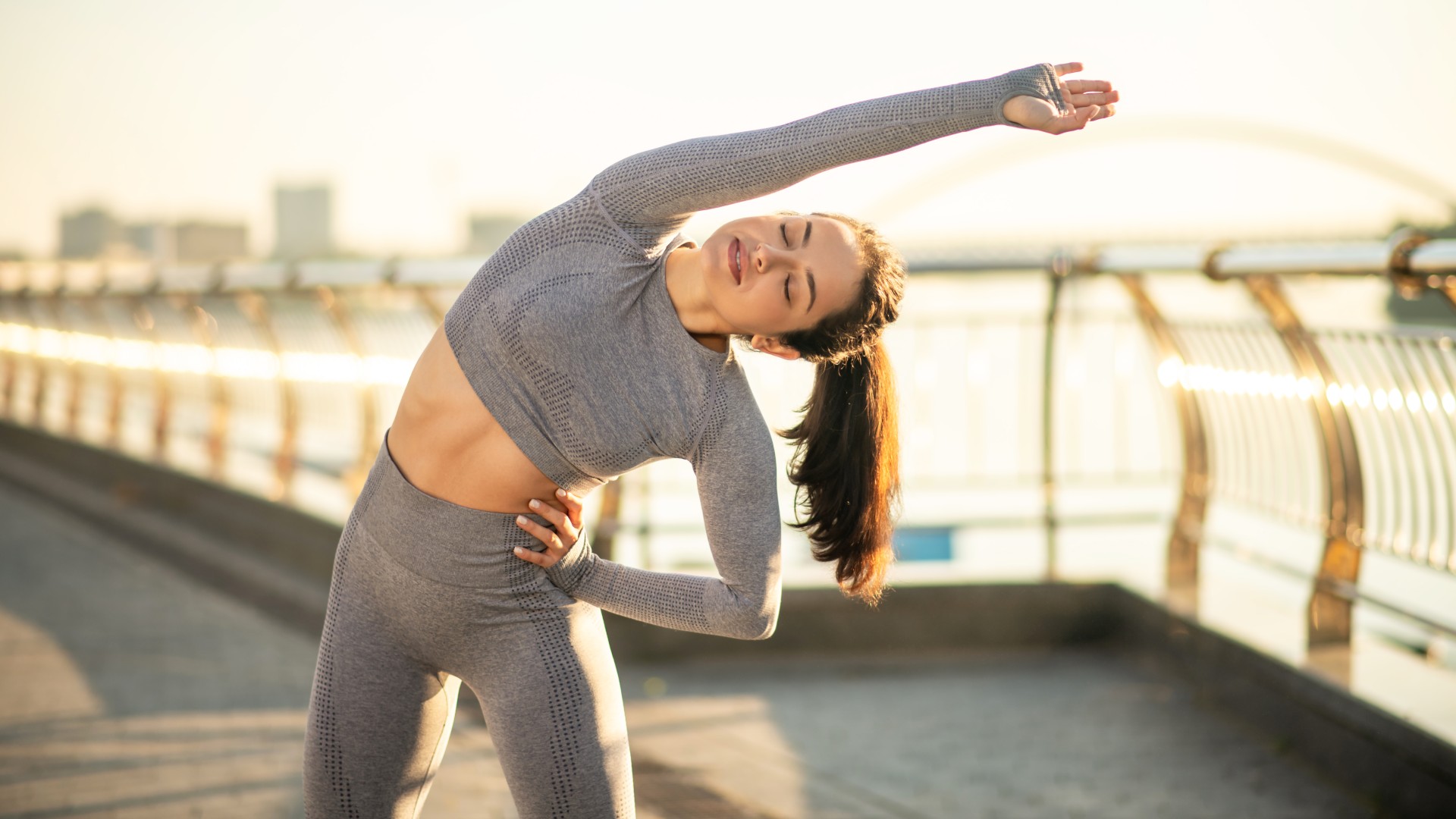
I love yoga, and not only has weightlifting improved my ability in the yoga studio, but my yoga practice itself has actually improved my efforts in the gym.
Yoga doesn’t just build mobility and flexibility (which is great for your range of motion during lifts, by the way); it also improves your functional strength.
Plus, yoga routines strengthen your core muscles, relying on them for stability during balances and more advanced postures, so you can harness core power, as well as become bendier on your mat and in daily life.
When I fancy rolling out one of the best yoga mats for my home practice, I sometimes take yoga poses and incorporate them into a short bodyweight strengthening routine.
These moves only take a short time to do, and I swear by them as a keen yogi and weightlifter for maintaining strength and suppleness.
What are the exercises?
I recommend an exercise mat and a yoga block if you have one. Give these a try, and I also include a routine to help you build some structure into the exercises below.
A post shared by Sam (@sam_stretchstrongco)
A photo posted by on
1. Downward dog to upward dog
Two staples in yoga, usually connected by chaturanga. If you suffer from back pain, I would err on the side of caution with this exercise and pop your knees down onto the mat to help protect your lower back as you transition. If you experience pain, stop immediately.
Get instant access to breaking news, the hottest reviews, great deals and helpful tips.
This combo move is full-body and delivers a deep stretch into the back body during downdog and the front body as you flow into updog. Move slowly and with control.
- Start in your downward dog position with feet hip-width apart and hands slightly wider, at shoulder-width apart
- Lift your hips up and back and draw the heels down toward the mat (here’s how to do downward-facing dog)
- Shift your weight forward, then lower your hips toward the mat and scoop your chest upward, moving into updog
- Plant your hands and relax your shoulders away from your ears. Your hips and thighs should stay lifted away from the mat
- Lift the hips up and back to reverse the movement, and push through your hands to return to downward dog.
2. Extended side angle (oblique variation)
Known as Utthita Parsvakonasana, the extended side angle posture strengthens your legs and core while opening up your hips and stretching the side body, hamstrings and spine.
Over time, practicing holding this pose can also build balance and stability as you create a long line from ankle to fingertip.
For an added challenge, see if you can extend both arms into the air. This challenges your oblique muscles that run down your waist while improving your isometric core strength.
- Stand sideways on your mat with your legs wide
- Turn out your left foot slightly, then turn your right foot to face the front of your mat
- Bend your right knee to create a 90-degree angle — very similar to a lunge, but with your back foot planted
- Ensure your right knee is stacked over the right ankle
- Engage your core and keep your left leg straight
- Inhale as you extend both arms to shoulder height
- Exhale as you bring your right forearm to your right thigh and extend your left arm overhead, reaching toward the top of your mat, palm down
- As you hold, rotate your left shoulder back to open your chest to the side of the room. Gaze toward your top armpit
- Next, extend your right arm forward without collapsing your upper body. Hold a block between your hands if you prefer
- Hold for several rounds of breath, then release and switch sides.
3. Dolphin pose
Learning how to do dolphin pose will do wonders for your upper body and shoulder strength; it’s also a test of back body mobility, especially for the shoulders and hamstrings. Focus on drawing your heels down toward the mat and lifting your hips high.
- Start on your knees with elbows and forearms resting on your mat. Try to keep your arms parallel to each other with palms flat against the mat. If this feels painful for your shoulders, clasp your hands together
- Engage your core, then lift your hips and knees away from the floor
- Push your hips up and back as if performing a downward dog. Keep your forearms and elbows pressed into the mat
- Draw your heels downward and maintain a soft knee bend if you have tight hamstrings
- Walk your feet slightly closer to your hands if you can
- Gaze between your legs and hold the position
- Release and lower your knees onto the mat.
The routine
Check out the video above for the transitions to make this routine flow.
- Downward dog to upward dog: 10 reps
- Extended side angle: 20-30-second hold right side
- Downward dog to upward dog: 10 reps
- Extended side angle: 20-30-second hold left side
- Downward dog: 5 breaths
- Dolphin pose: 10 breaths.
More from Tom's Guide
- I did a 3-minute lizard pose every day for a week — here's why I love it
- This simple 12-minute yoga routine relieves hip pain and boosts lower body flexibility
- I suffer from tight hip flexors, and these are the stretches that help

Sam Hopes is a level 3 qualified trainer, a level 2 Reiki practitioner and fitness editor at Tom's Guide. She is also currently undertaking her Yoga For Athletes training course.
Sam has written for various fitness brands and websites over the years and has experience across brands at Future, such as Live Science, Fit&Well, Coach, and T3.
Having coached at fitness studios like F45 and Virgin Active and personal trained, Sam now primarily teaches outdoor bootcamps, bodyweight, calisthenics and kettlebells.
She also coaches mobility and flexibility classes several times a week and believes that true strength comes from a holistic approach to training your body.
Sam has completed two mixed doubles Hyrox competitions in London and the Netherlands and finished her first doubles attempt in 1:11.
You must confirm your public display name before commenting
Please logout and then login again, you will then be prompted to enter your display name.
